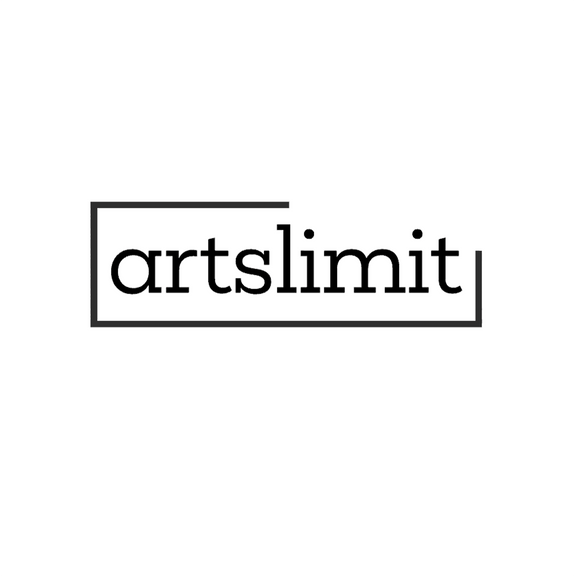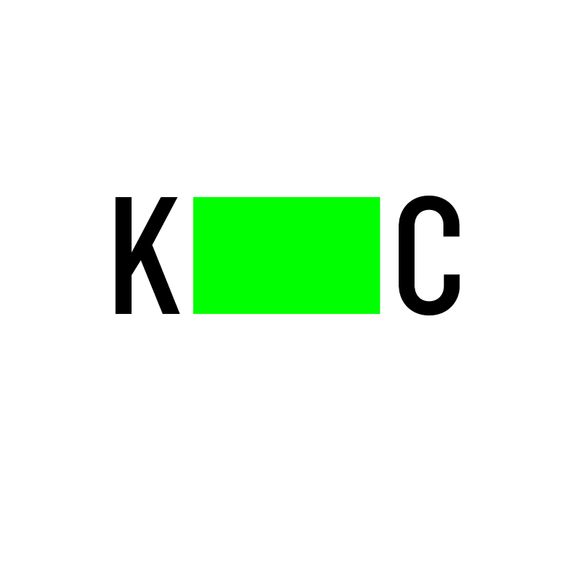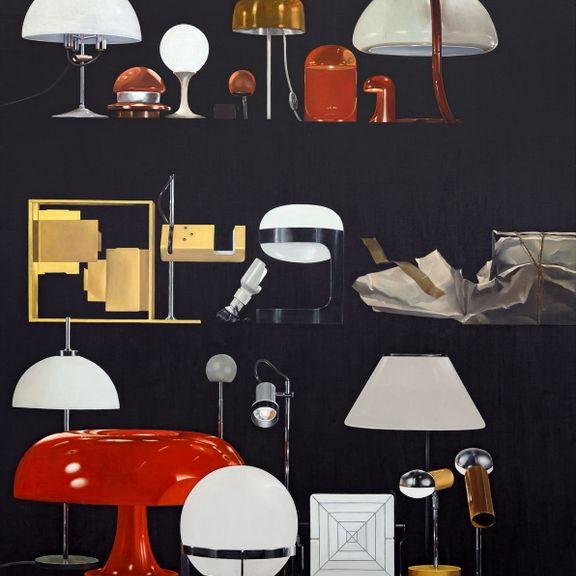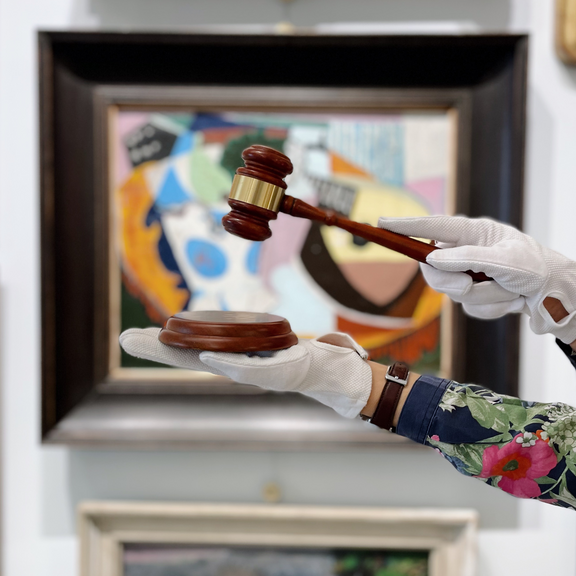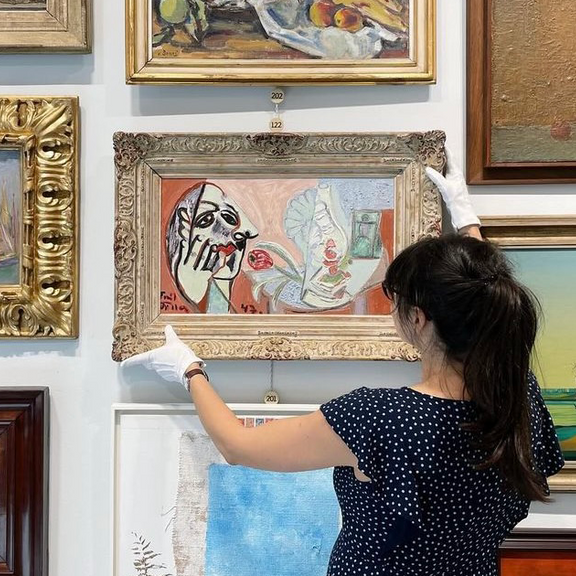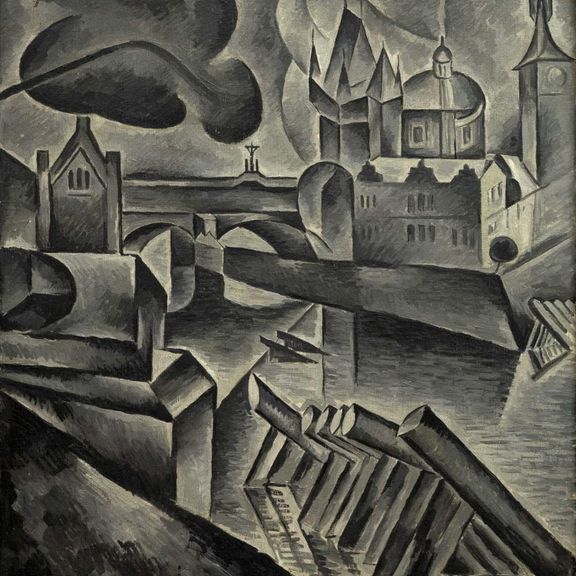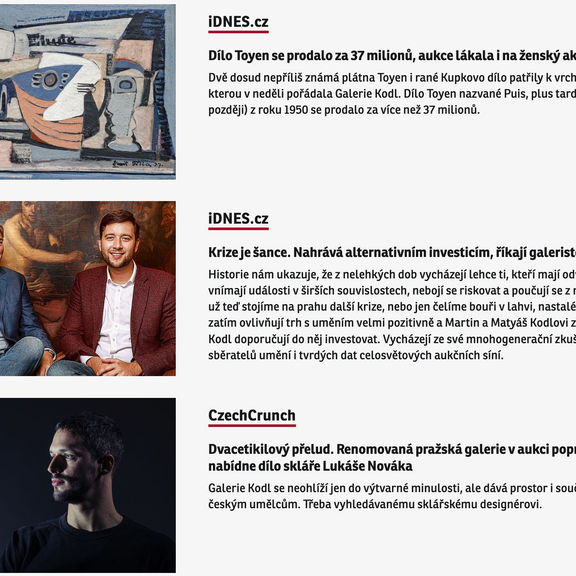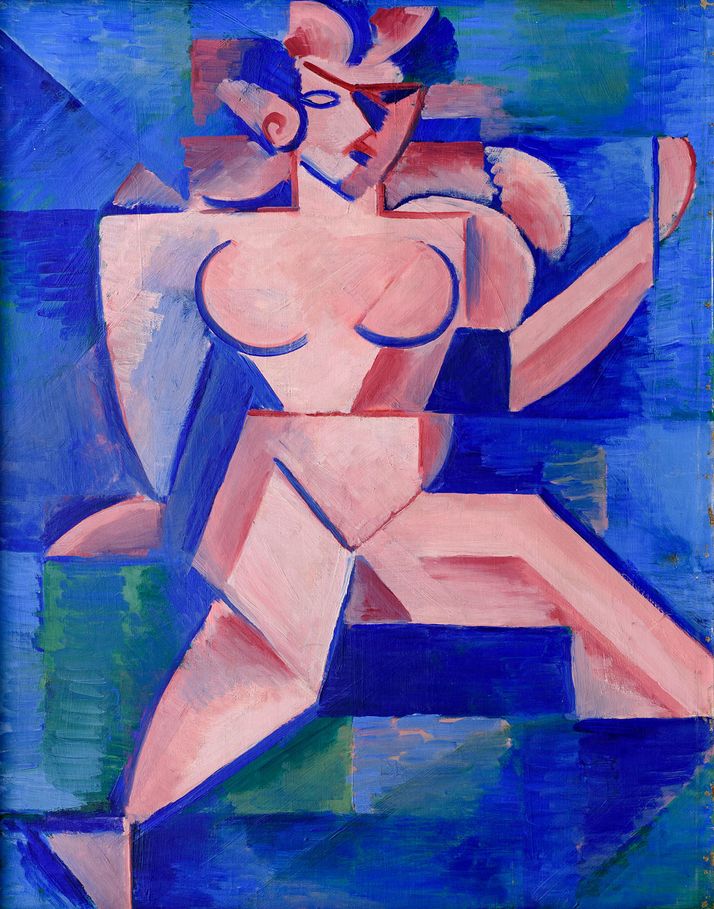
oil on canvas
1917–1921
lower left
80.5 × 63 cm
frame
This absolutely unique double-sided painting by Václav Špála presents two of the fundamental subject-matters of this artist, who is one of the most important personalities of Czech interwar art. On the obverse, there is a highly progressive figural composition. It was not signed, probably because it was so bold that Špála did not dare to present it in public at the time, and left it in his studio for later work. Dr. J. Borovička, whose famous collection this painting has been in for a long time, later presented it from this side. It depicts one of the most radical approaches to depicting the female nude that Špála developed during the period of Cubism-Expressionism. Bathing Woman presents a certain roughness in the reduction of the shape to the surfaces, yet it does not deny Špála’s sensitivity and stunning talent, perceptible in the soft brushwork and perfect work with changing shades of individual colours. Female nudes appeared in his work quite regularly, especially around 1920; he often used them as allegories of the seasons and experimented in individual details with the possibilities of their impression. The painting on the reverse, with the river Vltava and landscape nearby Veltrusy, falls into the “green period” of Špála’s work and follows on from his contemporary interest in rivers – at that time still the Vltava, but later also others. Using individual brushstrokes, he composed in soft colours and a relaxed brushwork a peaceful panorama of the summer landscape with its green shores and meandering river. The only reminder of human life in this idyllic scene is a small figure of a girl with a red scarf who wades through tall grass. The painting of the Vltava is signed and was also presented from this side (Václav Špála, Výtvarné Hlinecko, Hlinsko, Summer 1975, cat. no. 37). Both works comes from the highest-quality and the most appreciated period of Špála’s work, fundamentally highlighting his uniqueness within Czech art. The value of this artwork is further enhanced by its provenance from one of the most famous art collections of Czech modern history. Assessed during consultations by prof. J. Zemina and PhDr. R. Michalová, Ph.D. From the attached expertise by PhDr. K. Srp: “[…] The painting, with a straddled woman alluding to the allegory of Summer in the late 1920s, is not dated, but some comparison can be made with paintings and drawings by Jiří Kroha from the early 1920s, whose strong arrival was welcomed by the Tvrdošíjní art group generation, with whom he even exhibited twice (Exhibition of Modern Art, organised by Veraikon, March – April, 1920; the third exhibition of Tvrdošíjní and Guests, Art House, January 1921). The connections between Špála and Kroha are very close in the dynamic, simplified concept of the female nude. Špála was close to Kroha and even reminded [the public] of his arrival in the article Jak to bylo [How It Was], published in Veraikon VII (1921–1922, p. 43). […]“

